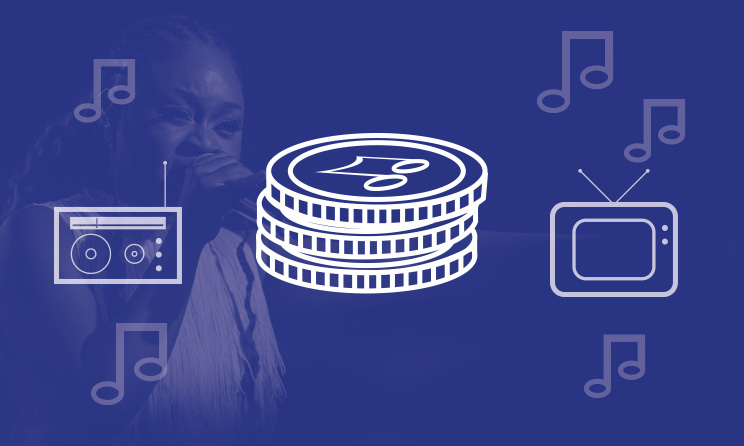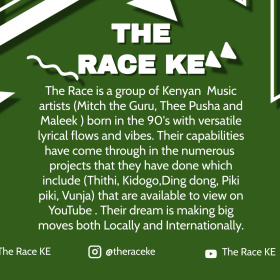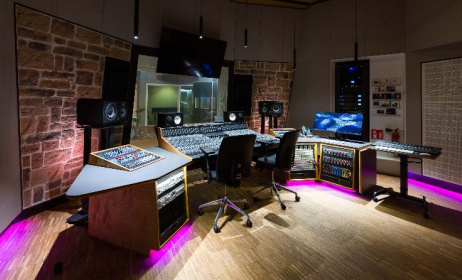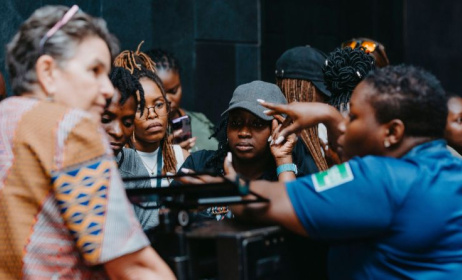Understanding broadcasting royalties in South Africa
Whenever music is played in public by a broadcaster, such as a TV or radio station, royalties are generated and owed to musicians.
This article explains how broadcasting royalties can function as a revenue stream for South African music creators. According to Music In Africa’s Revenue Streams for Music Creators in South Africa 2022 report, public performance and broadcasting royalties generate an average monthly income of R14 522.
What are broadcasting royalties?
As discussed in other articles in this series, a song has many aspects of copyright: the composition, lyrics, sound recording, video copyrights and performers’ rights, among others.
The composition refers to a musical work created by created a composer and/or songwriter, which includes the notes, melody and lyrics (if applicable). Publishers usually sign composers and songwriters (i.e. the music owners)[1]. The sound recording (the master) is the recorded version of a composition created by recording artists. Record labels generally sign recording artists, and therefore they are usually the record owners.[2] Ultimately, whoever wrote the music or commissioned the sound recording owns the copyrights.
To illustrate this concept, consider the following example:
- Songwriters Alan Lazar and Marilyn Nokwe were the composers (meaning they wrote the lyrics and melody) of ‘My African Dream’ by Vicky Sampson.
- Vicky Sampson, the recording artist – signed to Gallo Records at the time – recorded a version of Lazar and Nokwe’s composition.
- Therefore, Gallo Records owns the sound recording of Sampson’s performance, while Lazar and Nokwe (and their publishers) own the composition.
What royalties do broadcasts generate?
Whenever a song is broadcast, or played in public, both the composition and sound recording generate royalties. In fact, two royalties are generated from the composition.[3]
The sound recording also includes the performer’s share, and so – in essence – there are four rights to consider when a sound recording is broadcast. This increases to six rights if a music video is broadcast, as the video includes the actors’ performance share as well.
There may be further trademarks and copyright licences in addition to these rights, so it can get quite complicated:
- Firstly, when a song is broadcast on a radio or TV station, the composition generates public performance royalties. These are typically collected by a collective management organisation (CMO). In South Africa, the relevant CMO is the Southern African Music Rights Organisation (SAMRO).
- The second royalty generated from the composition is the mechanical royalty, which is collected by the Composers, Authors and Publishers Association (CAPASSO) in South Africa. Mechanical royalties are generated whenever a composition is reproduced in a different format – whether digital or physical. Therefore, TV broadcasts tend to generate the lion’s share of mechanical royalties in South Africa.
- The sound recording generates needletime royalties, which are collected by the South African Music Performance Rights Association (SAMPRA) and/or the Independent Music Performance Rights Association (IMPRA) in South Africa. Needletime royalties are generated when the sound recording is broadcast in public and include performers’ rights. These royalties are generated from plays on a variety of different mediums, including radio, aeroplanes, jukeboxes, cinemas, etc.[4]
- A music video generates video performance royalties, which are administered by RiSA Audio Visual and the Association of Independent Record Companies of South Africa (AIRCO) in South Africa. Video copyrights are also linked to the actors’ performance rights.
How are royalties calculated?
These various bodies – SAMRO, CAPASSO, SAMPRA, IMPRA, RAV and AIRCO – are called collective management organisations (CMOs).
These CMOs seek to make agreements with radio and TV stations throughout the country, although licensing and compliance remain a challenge in South Africa. Based on the type of radio station (commercial or community), they pay an agreed amount to the CMOs for a licence to use music that is registered with the respective collection organisations. The CMOs take an admin fee and the remainder goes to the stakeholders involved in the production of the song, like publishers, songwriters, recording artists and record labels.
For the sake of transparency, SAMRO has uploaded a document tabling the unit rates for musicians to calculate their performance royalties. SAMRO performance royalties are calculated using the following formula:
SAMRO Royalty = Unit Value x Duration Song Play on Broadcast x Percentage Split
- Unit value. Each broadcaster pays a different unit value. This value is stated in the SAMRO unit value sheet linked above.
- Duration song play on broadcast. SAMRO relies on the broadcasters to provide this value, but musicians can track this data using Radiomonitor or the World Airplay Radio Monitor (WARM), which offers a 30-day trial. Note that this is not usually the full duration of the song, but the actual recorded time that the radio station played your song on the airwaves.
- Percentage split. The composition ownership split that was agreed with other musicians prior to registration. If you’re the only musician, this value is 1. If the song was co-written with another musician, with a 50/50 split, this value is 0.5.[5]
The other CMOs mentioned above calculate royalty's payments similarly, but registered South African musicians must contact them directly for the latest unit rates.
How to submit your music for radio play in South Africa
Unsure of how to submit your songs to radio stations in South Africa? The following pointers have been taken from this article by Saint Chinedu and this piece by Dave Scott.
- Firstly, ensure that your music is properly registered and contains accurate and thorough metadata.
- Prepare to submit only clean versions of your music – i.e. radio friendly with no obscenities/swear words – to commercial stations.
- Target the most appropriate radio stations to suit your profile and the genre of music you create. Try to reach out to decision makers, such as specific DJs or the station’s producer/programme director.
- Choose your single. The radio station will not have time to listen to a whole album or EP and make its own selection. Choose the most ‘radio friendly’ track you have and start by submitting just that song.
- Every major station will have specific instructions for music submissions. Don’t simply send through MP3s unless you are asked to. If no specific instructions are given, rather provide links to your songs.
- Occasionally, stations will like your song but may feel a little more work is required before it is ‘radio-ready’. If this feedback resonates with you, try to implement the changes and resubmit to the same station.[6]
It is also a good idea for new artists to request interviews from radio stations, as the local content quotas require stations to do this.
What must I do to collect broadcasting royalties?
There are several steps musicians must put in place to ensure they receive the broadcasting royalties that are owed to them:[7]
- Register with the three main CMOs (SAMRO, CAPASSO and SAMPRA).
- Register with RiSA and pay the fee to obtain your ISRC codes. Most CMOs and broadcaster use these codes to track airplay.
- SAMRO registration is free and can be done online.CAPASSO has a yearly membership fee. You can register online using the CAPASSO portal.
- SAMPRA registration is free and can also be done online.
- Notify each CMO when a song has been completed, providing the correct song splits.
- SAMRO allows musicians to submit notifications of works online.
- CAPASSO also has an online portal for musicians to send their notifications of works.
- SAMPRA also accepts notification of works via its website.
- Monitor your radio play with WARM or Radiomonitor.
- Radio is easier to monitor than TV, but some technologies will be able to monitor TV broadcasts in South Africa. Afstereo.com, for example, monitors TV and radio and works with several entities[8] – although CMOs in South Africa remain dependent on broadcasters to provide accurate data.
- Make sure you receive and analyse your royalty statements from the CMOs.
- Download the unit rates, where possible, and calculate how much you’re owed ahead of time.
- Compare the data you’ve been able to monitor (in Step 3) with your royalty statement.
- If the royalty statement is incorrect, contact the relevant CMO immediately and inform them of the issue.
Video: Five reasons why South African musicians should register music with their country’s CMOs.
When to expect royalties
Broadcast royalties can take anywhere from six to 24 months to get to musicians, depending on where the broadcaster is based and the quality of the reporting that is given to the CMOs.
The CMOs will tell you which period they are paying royalties for on your statements. Moreover, all the CMOs have distribution schedules on their websites. Musicians are advised to consult these schedules and know when to expect their broadcast royalties to be paid out.
Broadcast royalties troubleshooting
Although broadcasting royalties are extremely important to a musician’s career, the process of collecting them can be problematic.
Here are some common reasons for musicians not receiving the broadcasting royalties that are due to them:[9]
- Conflicting data. When multiple musicians work on a song and notify the CMOs with different information, the CMO doesn’t know which information is correct and a copyright conflict may emerge. This is particularly problematic when the royalty splits are different in the submitted notifications. See our article on the importance of metadata for more information.
- Common name. It has been reported that payments sometimes go to the wrong person if you have a common or easily confused name. This is why it’s important to double check your royalty statements and notify the CMO of any errors.
- Undocumented music. When music is not correctly registered with the CMOs, or when they are not properly notified of new tracks, they don’t know who to pay. Even if a song is by a popular artist, it must be officially registered and the CMOs must be notified of the correct royalty splits.
- Unlicensed/Fee-wavered broadcaster. Not all broadcasters generate royalties. Therefore, it is important to get your music broadcast on royalty-generating radio and TV stations.
Resources and citations
- [1] SAMRO. (2021). “Music Creator”. Accessed on January 9, 2022: https://www.samro.org.za/music-creator
- [2] Tunecore. (2010). “What is the difference between a composition and a sound recording?”. Accessed on January 9, 2022: https://support.tunecore.com/hc/en-us/articles/115006502747-What-is-the-difference-between-a-composition-and-a-sound-recording-
- [3] Hackula, A. (2020). Understanding Music Publishing in South Africa. SkillMusicSA.com. Accessed on January 9, 2022: https://www.skillmusicsa.com/what-s-music-publishing
- [4] SAMPRA. (2021). “Music Users”. Accessed on January 9, 2022: https://www.sampra.org.za/music-users/
- [5] SAMRO. (2021). SAMRO Performing Rights Royalty Distribution Rules. Accessed on January 9, 2022: https://www.samro.org.za/sites/default/files/SAMRO%20Performing%20Rights%20Royalty%20Distribution%20Rules.pdf
- [6] Chinedu, S. (2022). “How To Become a Top South African Artist Through the Best Record Labels”. Siwes Beginner. Accessed on February 15, 2022: https://siwesbeginner.com/south-africa-record-labels-contact/
- [7] Hackula, A. (2020). Ibid.
- [8] AFSTEREO. (2015). “About AFSTEREO”. Accessed on January 9, 2022: https://afstereo.com/#about
- [9] Hackula, A. (2020). Ibid.
This article is part of the Revenue Streams for African Musicians project, supported by UNESCO’s International Fund for Cultural Diversity in the framework of the UNESCO 2005 Convention on the Protection and Promotion of the Diversity of Cultural Expressions, the Siemens Cents4Sense programme, Siemens Stiftung, Goethe-Institut, the National Arts Council of South Africa and Kaya FM.
Editing by David Cornwell Kalin Pashaliev































Comments
Log in or register to post comments